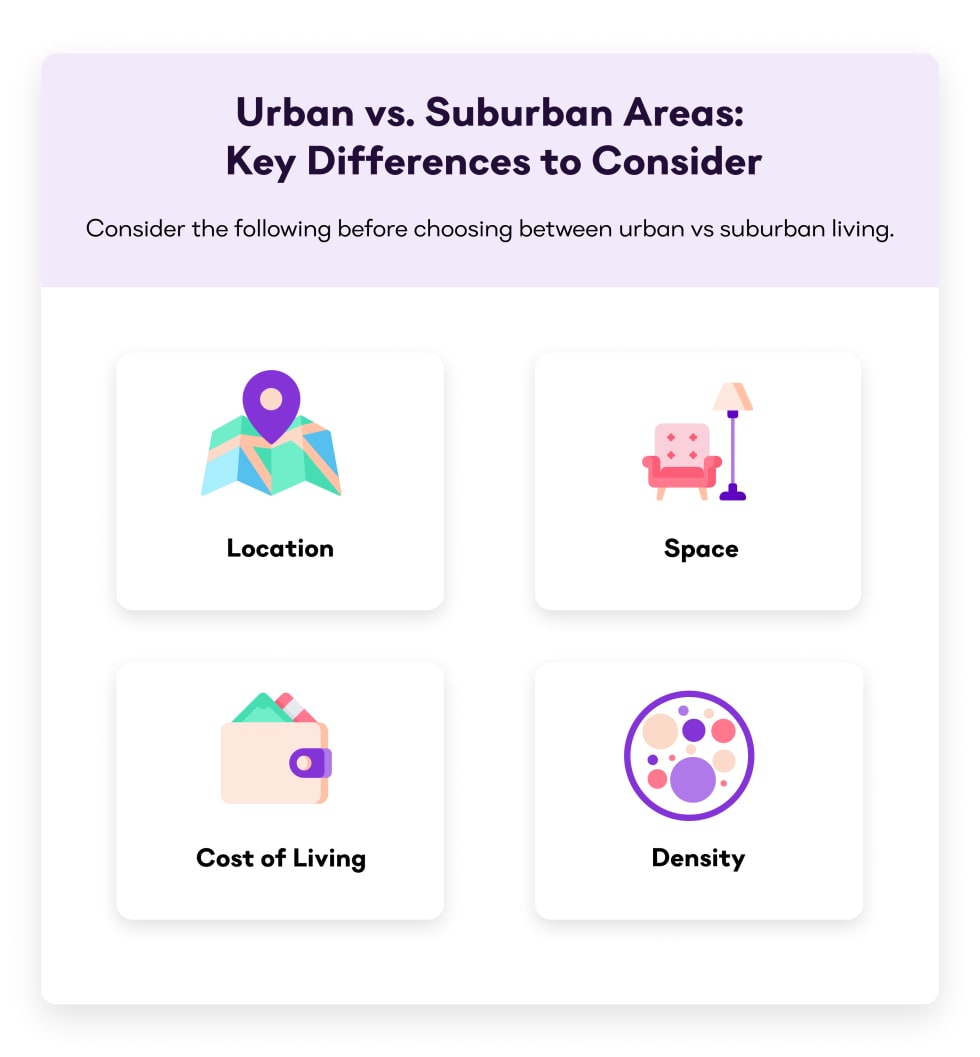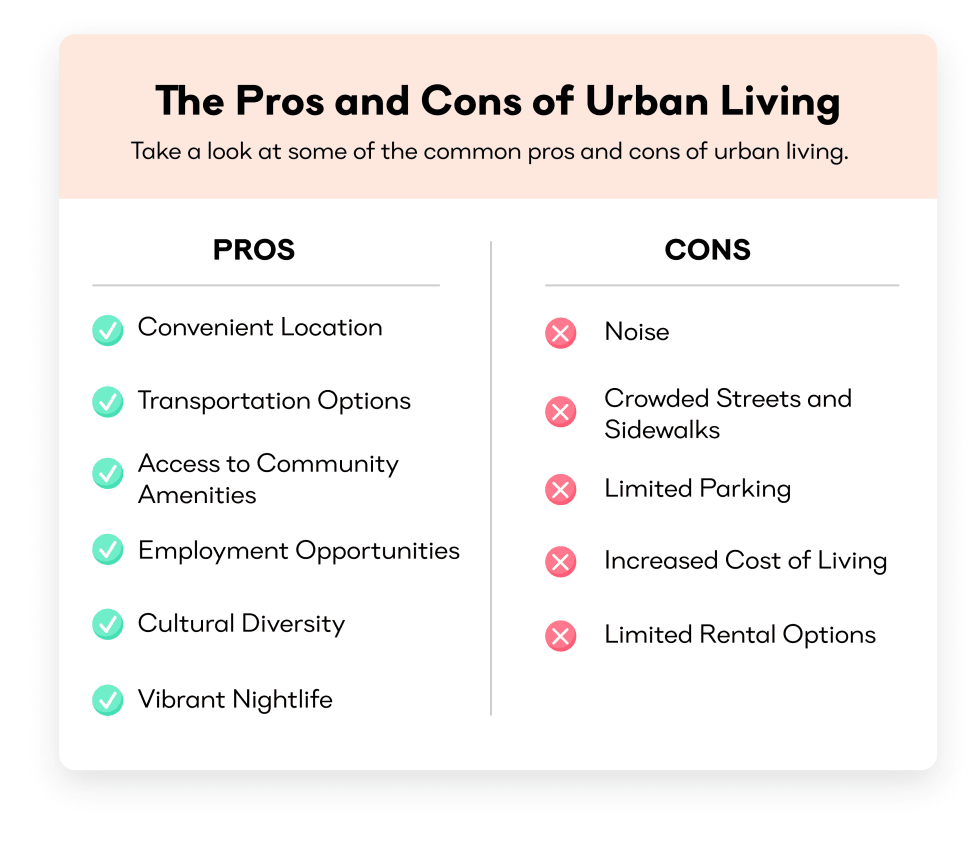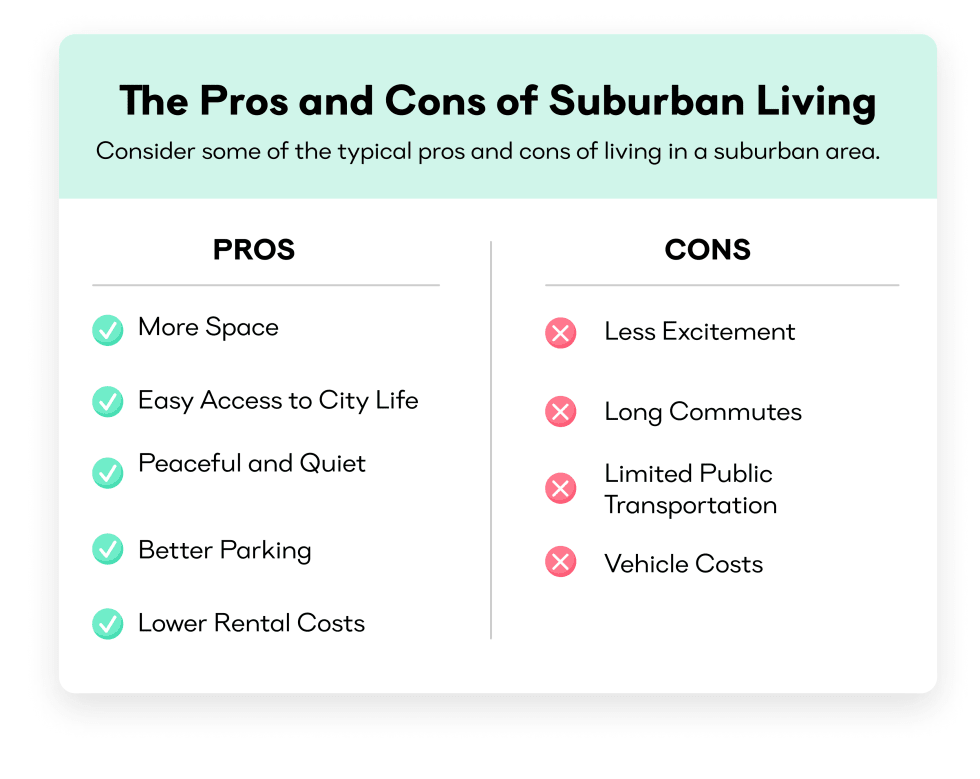South Bank at Quarry Trails
- 93 units available
- Studio • 1 bed • 2 bed • 3 bed
- Amenities
In unit laundry, Patio / balcony, Granite counters, Pet friendly, Stainless steel, Walk in closets + more

Struggling to decide between urban vs suburban living? Understanding the difference between urban life, with its cultural amenities and vibrant streetscapes, vs suburban neighborhoods with more space and a quieter environment - will allow you to find the perfect fit for your lifestyle!
Learn more about urban vs suburban living so you can make the right choice for your rental needs.

An urban area is typically any residential area situated in a larger city, providing access to nightlife, shopping, and high-end dining, with a central location. These urban communities are often close to bus and train stops in cities with reliable public transit systems, though some people rely on ride-share platforms and taxis.
Plus, if you’re living in an urban neighborhood, you’ll probably find yourself residing in a condo or apartment.
Suburbs are neighborhoods that are quieter and more spread out than cities, often made up of a cluster of residential properties less densely compacted as those found in urban areas. As you can imagine, living in the suburbs looks different from the city with calm, quiet streets and large single-family homes with yards.

If you’re deciding between urban or suburban living, it’ll mostly boil down to personal preference. Take a closer look at a few of the major differences of urban and suburban characteristics.
To get a better idea of location, imagine a major city as the urban area and the surrounding area as the suburbs. A metro suburb offers the convenience of access to major cities, without all the downsides like added noises, crowding, etc. Keep in mind that most businesses set up shop in major metropolitan areas, meaning you could live close enough to walk or take public transit to work.
If you’re looking to be in the middle of all the hype, the urban center is the place for you. But, keep in mind that since it’s where “everyone” wants to be, space will be limited. Smaller apartments and condos are what you’ll typically find in urban neighborhoods, with limited or no parking included.
But, for those who prefer to spread their wings a bit, a suburb might be the better option. If you don’t want to feel like you’re on top of your neighbor or you enjoy having some green space of your own, reconsider the suburbs.
As previously mentioned, many opt for suburban living as an option to cut cost of living expenses. Thankfully, suburban sprawls offer access to major freeways, making your commute relatively simple, if you’re up for the drive. On the other end of the spectrum, though, you may pay more for rent in an urban area while paying less for your commute/automotive expenses each month. For some, not having to pay monthly car payments, insurance payments, gas, car washes, etc., is enough to make it worth the cost of pricier rent in the city.
When imagining urban density, think of high rise buildings in New York City, filled to the brim with renters each leasing out a couple hundred square feet each. In the suburbs, on the other hand, the density is much lower, with single-family houses lining residential streets. While some people prefer the company of having the hustle and bustle around them, it’s not for everyone.

Let’s take a look at some of the pros and cons of urban living to help you determine if it’s the right kind of lifestyle for you.
Let’s start with some of the benefits you can look forward to in an urban neighborhood:
Ultimately, you have to decide whether the hustle and bustle is worth it.
It’s always important to look at both sides of the argument, which is why we’ll move on to the downsides of urban living:
Like with anything in life, you’ve got to take the good with the bad (so long as that’s the choice you’ve made).

Next up, we’ll take a closer look at the pros and cons of suburban living.
Suburban living is appealing to many, and here’s why:
Although suburban living offers many advantages, it’s still important to for you consider potential drawbacks.
Living in a suburban neighborhood is not for everyone. Here’s why:
Now that you have a better understanding of the urban vs suburban debate, consider what factors are important to you when deciding where to live during your apartment hunt.
Suburban living has become increasingly popular in recent years, with many major metropolitan areas featuring suburban neighborhoods as an alternative for renters.
New York City is the most populated city in the United States, which is why it comes as no surprise that there are various suburban neighborhoods within it. The city itself includes several boroughs, each with its own unique essence.
Of the five major suburbs of New York City, the most urban of them all is none other than Manhattan. In terms of more suburban areas, people seek out Long Island or Brooklyn. If you’re looking for a mix of the two, check out rental properties in Queens.
Los Angeles is the West Coast New York counterpart, offering various neighborhoods throughout the county. If you’re looking for a good suburban area to call home, consider Woodland Hills, an upscale option on the outskirts of the city for those still seeking out residence in the prestigious Los Angeles city limits. Burbank also offers residents more of a residential feel within proximity to major Los Angeles attractions.
Chicago is home to world-famous entertainment and dining options, with countless stops located throughout the city. However, if you don’t want to live in the bustling city limits, you may consider some of the quiet suburbs on the outskirts. Some of our top recommendations include Evanston, Arlington Heights, and even Naperville.
While Texas has many popular cities, Houston has become very popular over the years. And while EaDo is one of the more popular urban regions within the city, you might opt to check out the small community of Eldridge for suburban living. You can also check out The Museum District, which tends to attract upscale families looking to immerse themselves in the neighborhood’s arts culture.
Rural living might be the perfect fit for your lifestyle if you don’t mind sacrificing amenities. Of course, it comes with its own set of perks, including the wide-open countryside.
Here are a few things to consider before packing your bags and heading to the country:
Again, it’s all about taking the good with the bad, which means figuring out if the pros outweigh the cons for you in rural living.
So now that you’ve seen the head to head competition of urban vs suburban living, what’ll you choose? Again, it’s really up to you and what your rental preferences are. What’s most important is that you’re making the decision for yourself, and not for anyone else.
Ready to start your hunt for urban or suburban apartments? Take our quiz today and find the perfect place for you!


In unit laundry, Patio / balcony, Granite counters, Pet friendly, Stainless steel, Walk in closets + more
In unit laundry, Granite counters, Hardwood floors, Dishwasher, Pet friendly, 24hr maintenance + more